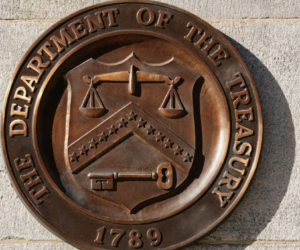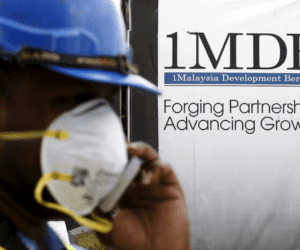In April 2022 Financial Action Task Force (FATF) published two handouts giving insights into its planned revised methodology and procedures for the 5th Round of Mutual Evaluations. The highlights of the methodology include:
- Greater emphasis on effectiveness of countries in implementing their AML/CFT/CFP frameworks;
- Greater focus on risk and context, both by the country and by assessors;
- Disaggregating financial institutions from designated non-financial businesses and professions in mutual evaluations; and
- More targeted recommendations in Mutual Evaluation Reports (MERs), setting out actions and timelines to cure deficiencies.
The revised procedures will also see:
- Mutual evaluations every 6 years instead of every decade (as occurred in earlier rounds); and
- Reshuffling the sequence of mutual evaluations, prioritizing countries with the lowest scores and highest risks.
In addition, there have been some adjustments to both the Regular and Enhanced Follow-up reporting timelines, syncing the two, both of which will now first occur three years after the MER is published. On the face of it, the current demanding International Cooperation Review Group (ICRG) timeline remains unchanged. Qualifying countries will go straight into the 1-year observation period immediately after the MER is published, and will progress to the FATF “grey list” if deficiencies are not addressed within that time.
MERs or Follow-up Reports?
FATF’s new approach has pros and cons. On the upside, publishing mutual evaluations every 6 years arms the compliance community with more up-to-date information on the risks posed by a country and its sectors. On the other hand, that was (and remains) the point of robust follow-up reporting, which aims to set out the progress a country has (or hasn’t) made since its mutual evaluation. Optional re-ratings in the follow-up process also distort the picture of a country’s position. A country may avoid being re-rated for a FATF Recommendation for which it was rated as Compliant in its MER but which has since been updated. Greater transparency on when countries have chosen not to demonstrate compliance with revised standards would be useful for the compliance community.
The Reshuffle
If not properly managed, reshuffling the order of the mutual evaluations could potentially lead to longer gaps between MERs for some countries and increased burdens on others. For example, while low-risk country A’s 4th Round MER may have been published in 2014, its 5th Round MER could be published as late as 2030. In contrast, high-risk country B’s 4th Round MER published in 2024 could be followed by a 5th Round mutual evaluation soon thereafter. Higher scores also do not always directly correspond to lower risk, as factors such as the size of a country’s financial sector, position in the global economy or being located along WMD supply chains can impact on vulnerabilities.
The global risk landscape has also changed since 2014. For example, the top money laundering threats identified in mutual evaluation reports under the 4th Round does not explicitly include cyber-related crime, which has emerged as a significant money laundering predicate and source of terrorist and proliferation financing in recent years. Thus, 4th Round MERs cannot be the sole benchmark on which prioritisation of 5th Round evaluations is based. The takeaway for countries however is that they will need to pay even greater attention to getting their national risk assessments right in the 5th Round.
A Vicious Cycle
While only 43% of FATF countries achieved a high or substantial level of effectiveness during the 4th Round, this figure is as low as 14% for members of FATF Styled Regional Bodies (FSRBs). FSRB members, many of which are lower-capacity countries, have so far made up a disproportionate share of the FATF “grey list.”
FATF’s increased focus on effectiveness can therefore see this phenomenon repeating itself. The end result is that lower-capacity countries can be caught in a continuous cycle of reporting throughout the ICRG process. This cuts into the time to actually implement effective changes, as the same personnel responsible for implementation are often called upon to fulfill FATF and FSRB reporting requirements.
FSRBs will also have to cope with a shorter timeframe to deliver mutual evaluations. This will place additional resourcing burdens on their secretariats, and on member countries to provide assessors and reviewers for MERs, and to engage in robust discussions of MERs at plenary and working group meetings.
Silver Lining
The silver lining however is that FATF’s promise of more results-oriented recommendations in MERs would allow countries to take prioritised actions during the one-year ICRG observation period, increasing their chances of avoiding the “grey list.”
The lack of direction on what would amount to sufficient progress during the observation period has been a major Achilles’ heel for many countries in the 4th Round.
The FATF also promises a similar approach to the follow-up process, giving countries a clearer indication of what the international community would view as sufficient to address remaining deficiencies.
This is of course a positive step, but could mean even more rigorous and time-consuming discussions of follow-up reports at FATF and FSRB plenaries. The country under review would also need to factor the logistics of implementing any such recommendations into deciding whether to accept or object to such conclusions.
Conclusion
While we will have to await sight of the full FATF 5th Round Methodology and Procedures, the new approach is likely to have some teething problems, especially for FSRBs. FATF’s drive to improve the efficiency of the mutual evaluation system is however quite laudable.
There would nevertheless still be a need to continuously monitor the new procedures and maintain the flexibility to make adjustments and to avoid countries and FSRBs becoming overwhelmed.
Share this on:
Follow us on:









